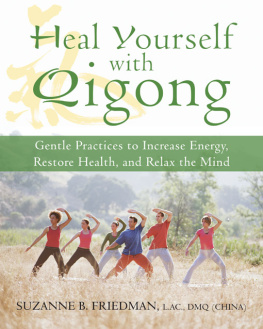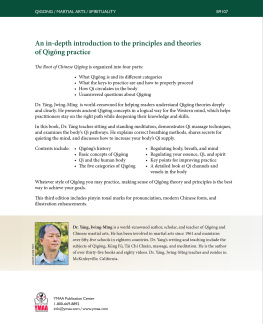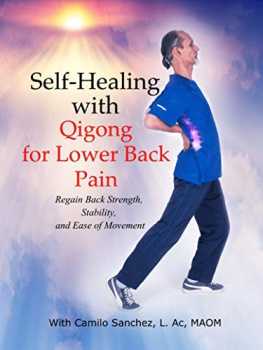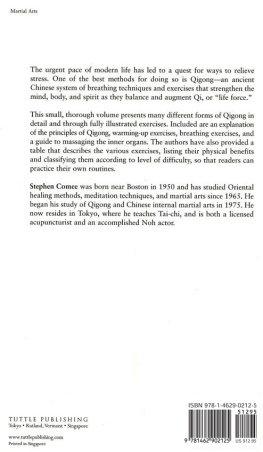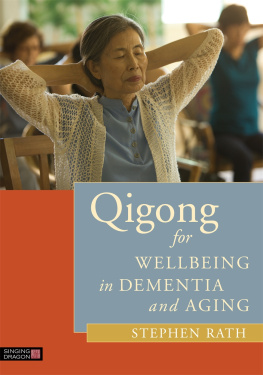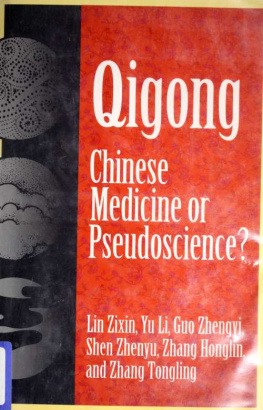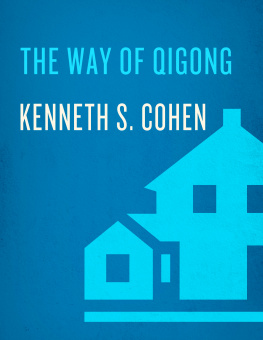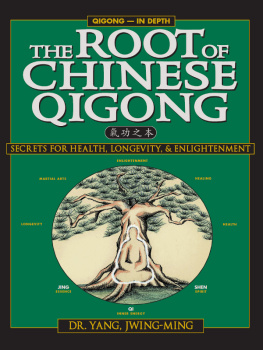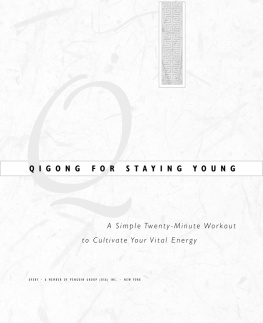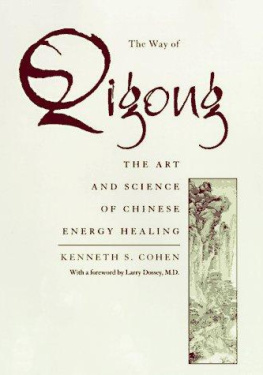Suzanne B. Friedman, L.Ac., DMQ (China), is an acupuncturist, herbalist, and doctor of medical qigong therapy. Friedman is the first non-Chinese person to be inducted into her teachers lineage as a Daoist qigong master. She is chair of the Medical Qigong Science Department at the Acupuncture and Integrative Medicine College in Berkeley, CA. Friedman is clinic director of Breath of the Dao, a Chinese medicine clinic in San Francisco, CA. Her articles on qigong and Daoism have appeared in numerous journals and magazines nationwide.
Suzanne Friedmans teaching style and her books reveal a generous and firm willingness to make her enthusiasm for qigong accessible to others.
Dr. Antoine Delaly, acupuncturist, medical hypnotist, and qigong practitioner in Lausanne, Switzerland
Friedmans in-depth studies and prolonged practice of Taoist meditation has enabled her to understand aspects of qigong practice that are not usually uncovered by Western academics and practitioners. Given such a perspective, her book is the first of its kindlucid, original, and practical.
Grandmaster B.F. YeYoung, Taoist Inner Alchemist and former University Professor of Chinese Philosophy and Arts in China
Lao Zi, ancestor of Taoism, once said the only reason that we suffer hurt is that we have bodies; if we had no bodies, how could we suffer? How to achieve no body? Begin with the qi practice now! This book will show you how.
Dr. Xu Hongtao, doctor in the qigong department at Xiyuan Hospital in Beijing, China
The techniques in this book could change your life for the better. Get going and youll see for yourself.
Joseph M. Helms, MD, president of Helms Medical Institute
Finally, a book that demystifies qigong and makes it accessible to a large audience. If you have ever had second thoughts about trying qigong, this book will point you in the right direction. I have waited a long time for a book like this to give to my students and patients.
Fia Hobbs, MMQ, LMT, BodyCareConsultants in Stockholm, Sweden
Suzanne Friedmans book is a unique and important work that will enable readers to harness qigong to significantly improve their health. Clearly and beautifully written by one of the most respected authorities on the subject, Heal Yourself with Qigong unlocks the many secrets of this powerful healing system from the East.
Dermot OConnor, author of The Healing Code

Publishers Note
This publication is designed to provide accurate and authoritative information in regard to the subject matter covered. It is sold with the understanding that the publisher is not engaged in rendering psychological, financial, legal, or other professional services. If expert assistance or counseling is needed, the services of a competent professional should be sought.
Distributed in Canada by Raincoast Books
Copyright 2009 by Suzanne B. Friedman
New Harbinger Publications, Inc.
5674 Shattuck Avenue
Oakland, CA 94609
www.newharbinger.com
Cover design by Amy Shoup; Text design by Amy Shoup and Michele Waters-Kermes;
Acquired by Jess OBrien; Edited by Kayla Sussell
All Rights Reserved
Epub ISBN: 9781608825813
The Library of Congress has Cataloged the Print Edition as:
Friedman, Suzanne B.
Heal yourself with qigong : gentle practices to increase energy, restore health, and relax the mind / Suzanne B. Friedman.
p. cm.
Includes bibliographical references.
ISBN-13: 978-1-57224-583-9 (pbk. : alk. paper)
ISBN-10: 1-57224-583-2 (pbk. : alk. paper)
1. Qi gong. I. Title.
RA781.8.F7488 2009
613.7148--dc22
2008052238
For Becca,
la princesa
Contents
Foreword
I trained in acupuncture in France in the mid-1970s. Each morning before seeing patients my teacher and I spent an hour going through a sequence of tai chi chuan postures. I had spent a year learning the sequence in Berkeley, where Master Lee taught only one small move per lesson, per payment. He claimed to be a master of a rare northern style of tai chi, and was the spearhead of a wave of tai chi masters immigrating to California and the United States.
We felt well stretched and virtuous as we approached the days patients. I tried to sustain this rhythm when I started my own practice, but within a few years I reluctantly admitted that I had never tapped into the rush of vitality, tranquility, or spiritual connection that I had been promised. Indeed I was well stretched, but bored, and the virtuous feeling no longer justified the time it took to do the sequence. So I abandoned tai chi for exercise that I felt was better suited to my age: jogging, swimming, biking, and I have continued with the latter twoincreasingly intermittentlythrough my middle age.
As the wave of tai chi masters transformed into a tsunami of qigong masters, I tried again. Qi is, after all, the stuff we push and pull around the body with our acupuncture needle patterns. Same experience: a transient feeling of virtue, some new stretches for an older and less flexible body, but still requiring too much time for its promised and largely unrealized benefits.
Then I met Dr. Suzanne Friedman, a true master of medical qigong, who understands the daily challenges of striving to keep a balance among body, psyche, and spirit while living in the real world. Her approach to qigong is refreshingly straightforward, honest, and generous. She embodies the same attitude I found so appealing in my teachers in France: an enthusiasm for every student to understand and learn what she has to teach, a clarity and openness in offering the information, and an encouragement for students to personalize and integrate the techniques according to their individual interests and needs.
Thats what Heal Yourself with Qigong is about: making qigong work in your life, for you, and making it available as well to those you influence, in a style remarkably easy to assimilate and put into practice. And its not boring.
Dr. Friedman starts with an overview of the history and theoretical foundation of qigong, nicely sprinkled with encouraging scientific references. She then moves quickly into the fundamental tenets of practice, very directly and in easy-to-understand language. She next provides general techniques for cultivating physical well-being, and then offers techniques appropriate for specific medical problems. In the final chapters she addresses emotional balance and spiritual integration. Its a tour from theory to practice, from body to emotions to spirit, that reveals details not available elsewhere, at least not without years of apprenticeship.
The integrative programs that Suzanne and I have developed for physician graduates of my acupuncture courses have been remarkably successful. Her medical qigong exercises facilitate a rapid and comfortable assimilation of the advanced acupuncture approaches I enjoy teaching. Qigong gives the theoretical material an experiential foundation, which locks the information more securely into the students psyches. Feedback from our students is enthusiastic, for both personal and professional applications.
Suzanne Friedman teaches what she practices: showing practitioners and patients how to heal themselves with qigong. She takes seriously the Daoist tradition of empowering patients to stay well by taking attentive care of all aspects of their being. Her book opens doors that have been kept closed by teachers who pass on their learning to only a few students at a time. This book not only demystifies qigong, it makes it into a lively and appealing daily habit well worth acquiring.

